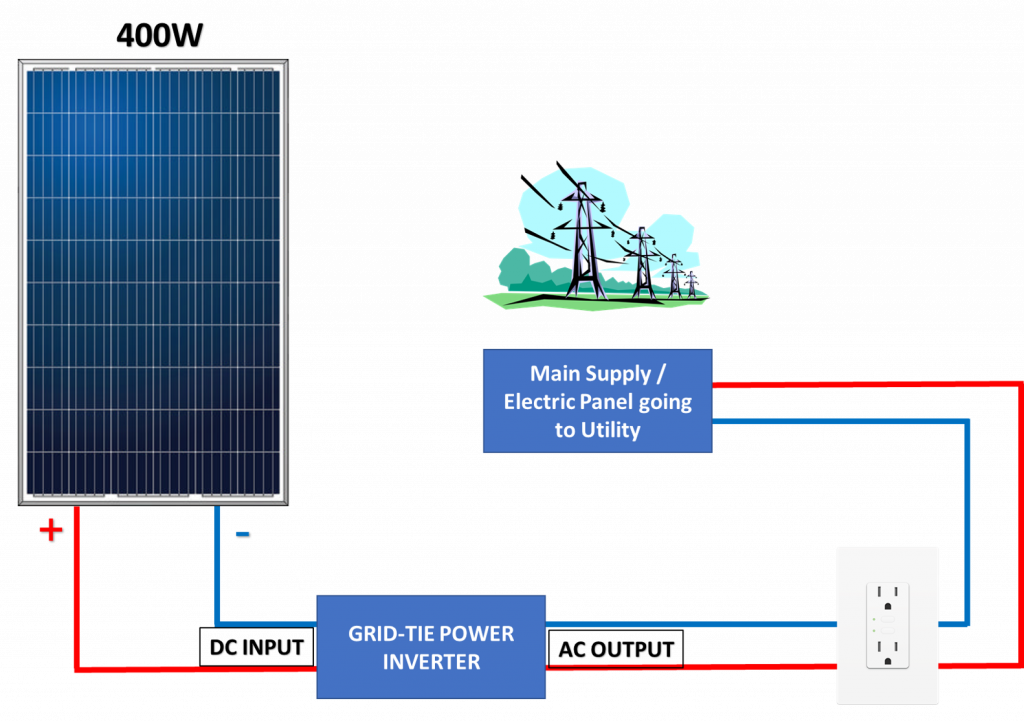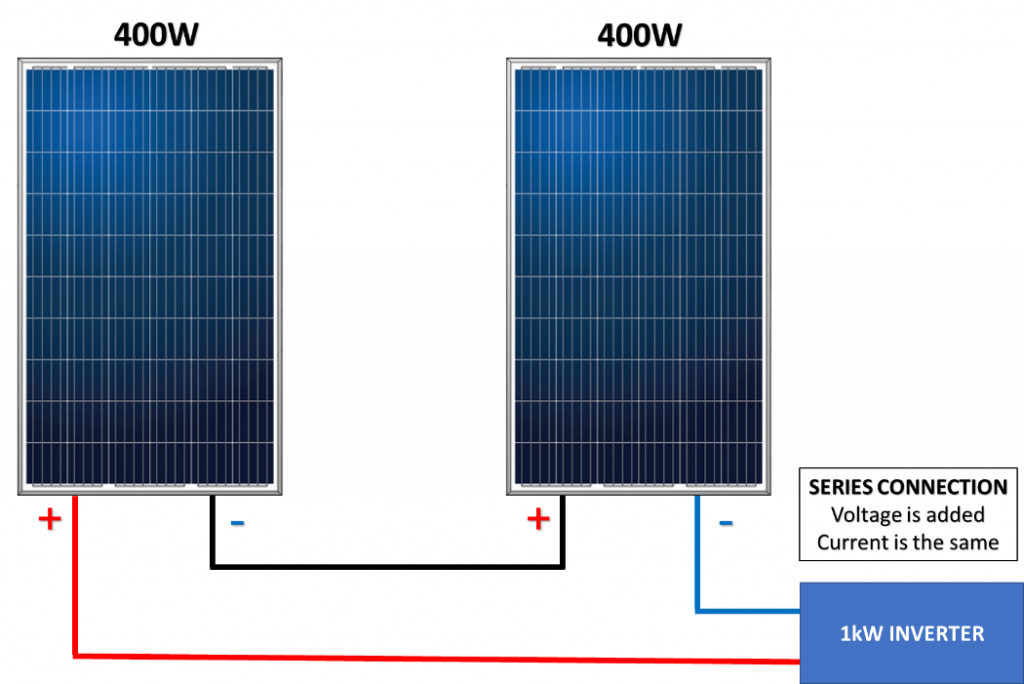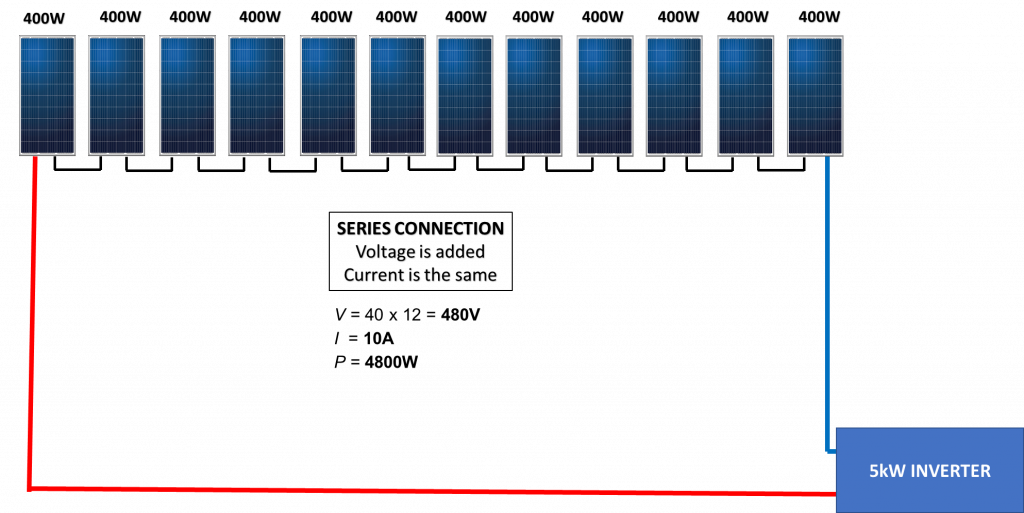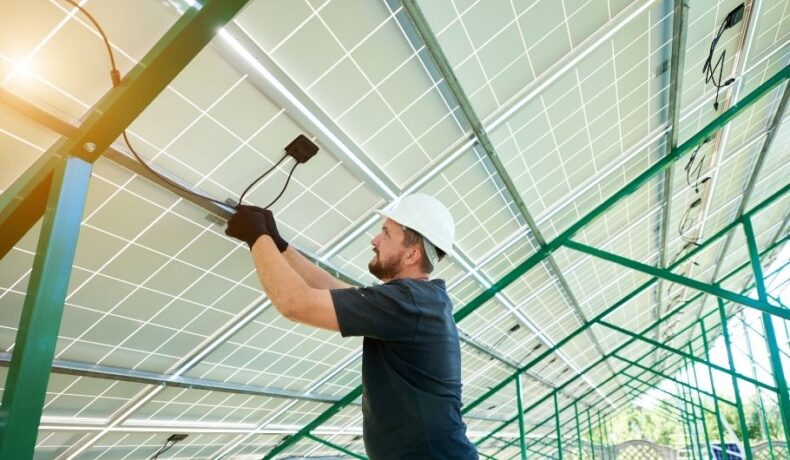Are you looking to learn how to wire solar panels? If so, you are probably a DIY-er who is 100% invested in purchasing a solar system. You may even have a general idea of how to implement your home project.
So now, you are looking for answers to more precise questions about the process.
Well, you came to the right place. Learning how to wire solar panels is essential if you are looking to go the DIY route.
However, the wiring of panels requires some knowledge of basic circuit diagrams and analysis. If you’re serious about learning this skill, we strongly encourage you to:
- Get a pen and paper;
- Start taking down notes; and
- Accept the fact that this article will take up more mental energy than usual.
After going through this article, we are confident that you’ll be well-equipt to wire your very own solar panels.
In this post, we will teach you:
- Wiring Configurations. How to wire solar panels in Parallel and in Series.
- Optimization. How to connect your solar panels to satisfy the voltage, current, and power ratings of your inverter
Before proceeding with the nitty-gritty, let us give you an overview of the topic.
In summary, there are two (2) ways to wire solar panels: parallel and series. How you wire solar panels affects the total voltage and total current of the solar panel system created, but the total power output remains the same.
Connecting solar panels in parallel increases the total current output of the solar panel system. In contrast, solar panels in a series string increase total system voltage output going to the power inverter.
Here at Climatebiz, we provide you with various articles covering green technology as a whole.
You may have encountered a lighter article telling you when is the best time to buy a solar rooftop. There is also some general advice on how to set up typical solar systems in your home.
However, today will be a bit heavier on the computing side because we are going into project implementation mode. This article is more of a set of in-depth, informational case studies rather than our other general guidelines.
Rest assured; we have your back in your journey towards sustainable living.
Table of Contents
How Do You Wire Solar Panels?
For us, the best way to answer this question is by doing. So, we’ll be looking at simple use case scenarios to walk you through the process.
To demonstrate the difference between series and parallel configuration, let’s take a look at this grid-tie solar system.

Suppose you are currently building confidence in DIY-ing your solar system. You are convinced that you want that 5kW grid-tie solar rooftop we discussed last time.
However, when you looked at your budget, you realized that you only had enough money for a 1kW grid-tied power inverter. And after doing the math, you discovered that the return on investment is still almost the same.
“Hmm..do I start small or wait until I could afford the 5kW?” you pondered.
In the end, you decided to start now rather than waiting to save enough money to afford the 5kW. A good choice if you ask us.
“Why?” you might ask.
What if we told you that you could proceed with the 1kW solar system right now, sell the 1kW power inverter, later on, buy the 5kW inverter, purchase more of the same solar panels (about ten more), then proceed with the 5kW solar system investment? Sounds more practical, right?
Let’s not muck about any longer. Time to craft a building plan for a 1kW system while discussing the 2 wiring configurations.
Thereafter, we can talk about how you can upgrade your system to 5kW.
What Wiring Is Required For Solar Panels?
Right now, you’re thinking about the most suitable wiring configuration for your solar panels when building your 1kW and 5kW solar system plans.
Unfortunately, there is not a straightforward answer to this. But as a rule of thumb:
You want panels connected in series for smaller applications (1kW or less) to minimize the current rating requirement for your conductors. You then want to transition to solar panels connected through a combination of parallel and series connections for more extensive applications (greater than 1kW).
To appreciate how these two configurations work, we will look at sample cases of panels wired purely in parallel or purely in series.
We will look at how each wiring configuration affects voltage and current input to your solar inverter.
How Do You Wire Solar Panels In Series?
The Anatomy And Specifications Of A Solar Panel
The first solar panel wiring configuration we will look at is the series connection. But, before you wire your solar panels in series (or parallel), you first have to familiarize yourself with the anatomy of a solar panel.
Each solar panel also comes with a manufacturer’s datasheet. For this session, we will take advantage of the voltage, current, and power ratings highlighted in red.

All solar panels have positive and negative terminals where you attach the conductors. For example, one of our previous articles discusses solar panel rating at length.
Wiring Solar Panels In Series
For our 1kW solar system, we will first start with only 2 solar panels.
Theoretically, you will end up with an 800W solar system. Our recommendation for this case is for you to connect them in series before connecting them to our 1kW power inverter. This inverter has the following ratings:
| Description | Value |
| Rated Power (denoted as P,rated) | 1000 W |
| DC Maximum input power (denoted as P,DCmax) | 1200 W |
| Maximum Current (denoted as I,max) | 65 A |
| Rated Voltage (denoted as V,rated) | 70 V-140 V |
Note: we will discuss how to maximize the 1200W later
To wire solar panels in series, you connect the first panel’s negative terminal to the second panel’s positive terminal. Then, you join the second panel’s negative terminal to the next panel’s positive terminal, and so on and so forth.

The negative terminal of the last panel will be connected to the negative port of your solar inverter. As you might have guessed, the positive terminal of your first solar panel will go into the positive inverter port of your solar inverter.
It is essential to point out that when you wire solar panels in series, you increase their total system voltage rating. However, their total current rating and total power rating both stay the same.
How Do You Wire Solar Panels In Parallel?
Now, how do you wire solar panels in parallel? This is easier to remember since you have to connect all the positive terminals of your solar panel to the positive terminal of your solar power inverter. Then, you do the same for all the negative terminals.
Now how does this affect the total voltage, current, and power out?
Unlike the series-connected solar panels, parallel-connected solar panels increase the total system current rating by adding the total. On the other hand, the total solar panel system current and power stay the same.

Should You Wire Solar Panels In Series Or Parallel?
This might sound vague and repetitive at this point. Still, you have to understand that the decision to wire your solar panels either in series or parallel highly depends on the conditions you need to satisfy.
“Conditions to satisfy? What are those?”
Recall that connecting solar panels in series increases the total system voltage sent to your inverter. On the other hand, parallel-connected solar panels increase the whole system current received by the same power inverter.
So when choosing a wiring configuration, your job is to make sure that the total system voltage, total power injected, and total system current fall within the inverter’s voltage, power, and current ratings, respectively.
The best way to drill this concept into you is through practice. So, in the next section, we will use all the things we discussed to decide which wiring configuration/s to use for a 1kW and a 5kW solar system.
Series VS Parallel Wiring: Can You Have Both?
Case 1: Solar Panel Series Wiring for the 1kW inverter
Okay, so here are our series-connected solar panels hooked to a 1kW power inverter.


Let’s compute the total voltage, current, and power our inverter receives from the 2 panels.
Remember what a series connection does to the total system voltage? If not, look at the Series Connection note in the figure above. Our total system ratings are computed as:
V,total = 40 Volts + 40 Volts = 80 Volts (V) (40V taken from 400W solar panel specifications)
I,total = 10 Amperes (A) (10A taken from 400W solar panel specifications)
P,total = 400 Watts + 400 Watts = 800 Watts (W)
You can also verify the P,total using the formula for power given as:
Power (P) = Voltage (V) x Current (I)
P,total = V,total x I,total
80 Volts (V) x 10 Amperes (A) = 800W
Great! Now, let’s check if these values fall within the acceptable range of our 1kW power inverter, as specified in the table above.
800 W < 1200 W DC Maximum Input Power
70V < 80V < 140V V,rated
10A < 65W A, max
Pop Quiz: Can you add another solar Panel to make it 1200W?
V,total = 40V + 40V + 40V = 120V
I,total = 10A
P,total = 400W + 400W + 400W = 1200W
Checking the figures concerning the inverter specs, we confirm that we can add one more 400W solar panel.
1200W <= 1200W DC Maximum Input Power
70V < 120V < 140V V,rated
10A < 65A I,max
Case 2: Solar Panel Parallel Wiring For The 1kW Inverter
Now, let’s see what will happen if we connect the two solar panels in Parallel:

Remember, instead of adding voltages, we add current when using parallel configuration. Voltage stays the same. This will yield the following results:
V,total = 40 V
I,total = 10 A + 10 A = 20A
P,total = 400 Watts + 400 Watts = 800 Watts (W)
Now, let us see if they fall within the parameters of the 1kW inverter.
800W < 1200W DC Maximum Input Power
70V < 40V < 140V V,rated
20A < 65W I,max
Oops, we didn’t satisfy one condition. Therefore, we cannot use the parallel configuration for our 1kW solar rooftop project.
However, this also means that you already know how to determine whether a wiring configuration is okay. Congratulations!
Now let’s see how to use these two configurations for your 5kW solar rooftop.
Case 3: Solar Panel Series Wiring For The 5kW Inverter

We bet some of you have already hypothesized how to satisfy these conditions. Let’s confirm them, shall we?
We want 5kW of solar power. Given that each solar panel is 400W, we can start with 12 panels since that would mean a total of 4800W. Note that you can also create many series-parallel combinations since 12 is an even number with a decent amount of least common multiples.
We get it. For some of you, that previous paragraph involved a lot of nerdy stuff. Feel free to read it one more time to increase comprehension.
Now, we think more solar panels should be connected in series rather than parallel.
Why?
Imagine that you have a high voltage threshold of 550V. This would mean you could connect the entire 12 solar panels in a single series string. Doing our usual computation will yield the following results:
4800W < 5500W DC Maximum Input Power
100V < 480V < 550V V,rated
10A < 20A I,max
If you had connected the solar panels in parallel, you would have gone out of bounds if you linked more than two.
So, the easy answer to our 5kW solar rooftop plan is to connect 12 solar panels in series.

That’s it?
That’s it. However, what if you are constrained to a lower voltage limit for your inverter?
Case 4: Solar Panel Series AND Parallel Wiring For The 5kW Inverter
You could do two 6 solar panel series strings.


V,total = 240V (no change since this is a parallel configuration)
I,total = 10A + 10 A = 20 A
P,total = 2400W + 2400W = 4800W
As you can see, connecting two 6-panel series strings in parallel gives you a lower total system voltage while increasing the total system current.
| Configuration | 12-Panel Series String | 2 Sets of 6-Panel Series String Connected in Parallel |
|---|---|---|
| Voltage | 480 V | 240 V |
| Current | 10 A | 20 A |
| Power | 4800 W | 4800 W |
| Advantage | Series circuits don’t heat up quickly due to smaller current | One parallel circuit can be connected or disconnected from the solar system without affecting the other parallel circuit. So If one wire wears out, you can still at least have 2400-W. This increases system reliability |
| Considerations | If one wire wears out, you could lose the entire 4800-W solar system | They require a bigger conductor size (20A) |
What Happens If You Wire Solar Panels The Wrong Way?
There are lots of mistakes people make when wiring solar panels. As a DIY-er, we advise you to be cautious with the following:
- Wiring solar panels with different ratings. For us, using varying solar panels is inefficient and potentially dangerous. Sometimes they are fine, but for us, it is not worth the trouble.
- BOTTOMLINE: you will be better off buying similar solar panels to avoid inefficiencies.
- Neglecting the power inverter voltage ratings. If the total voltage of your series string exceeds or falls below the power inverter rated voltage, this will either ruin your inverter circuit (overvoltage), or the inverter won’t work at all (undervoltage).
Final Thoughts
There you have it! A mini masterclass on how to wire your solar panels. A key takeaway from this session is that each solar panel wiring configuration controls how much total system voltage or current you inject into your power inverter while maintaining the total system power input.
Knowing when to use a parallel connection, series connection, or a combination of the two will enable you to tackle bigger projects, should you choose to do so.
Enjoy your wiring!
Key Terms To Understand
- Voltage (V) – According to Fluke, “Voltage is the pressure from an electrical circuit’s power source that pushes charged electrons (current) through a conducting loop, enabling them to do work such as illuminating a light. It is commonly measured to see if an electronic device is working properly or not“
- Current (I) – According to Dummies.Com, “Electric current refers to the flow of the electric charge carried by electrons as they jump from atom to atom. Electric current is a very familiar concept: When you turn on a light switch, electric current flows from the switch through the wire to the light, and the room is instantly illuminated.“
- Power (P) – According to Dummies.Com, “Power is measured in units called watts (abbreviated W). The definition of one watt is simple: One watt is the amount of work done by a circuit in which one ampere of current is driven by one volt. In other words, power (P) equals voltage (V) times current (I)“

